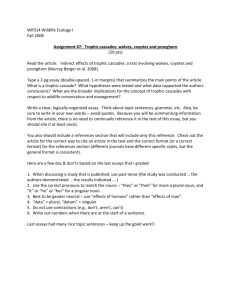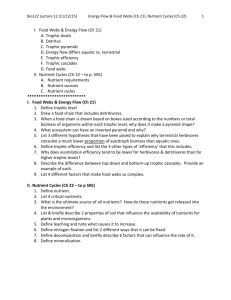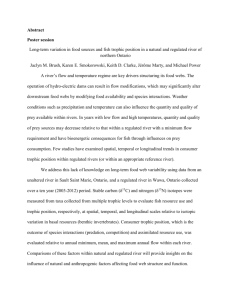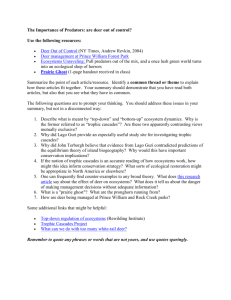Reading Assignment One
advertisement
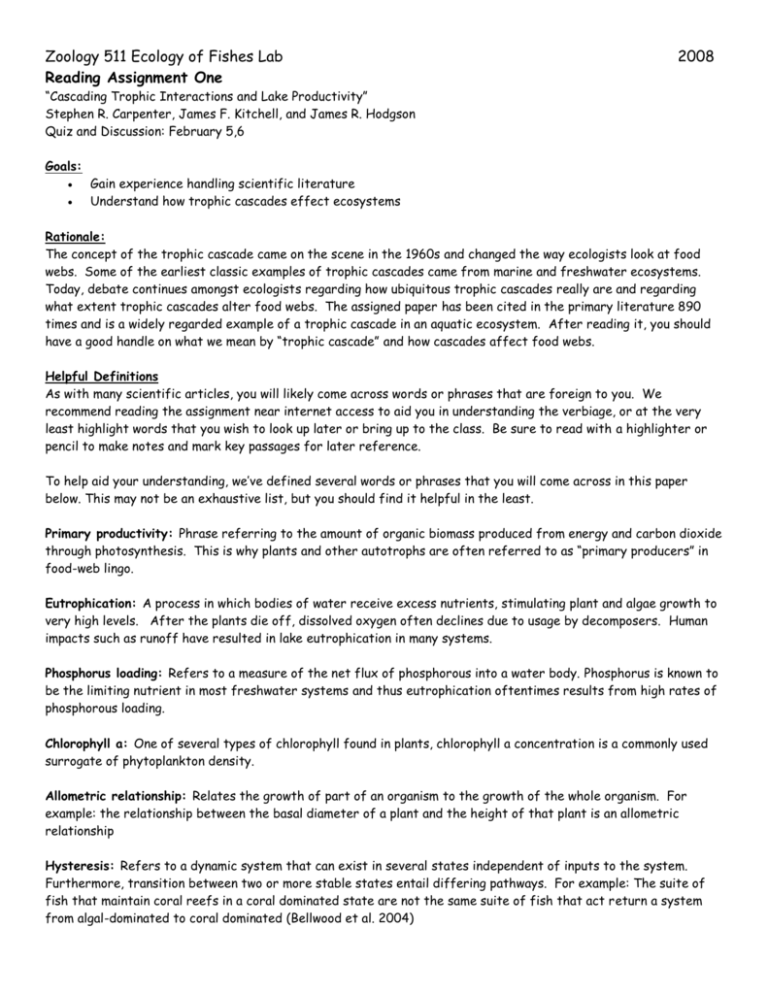
Zoology 511 Ecology of Fishes Lab Reading Assignment One 2008 “Cascading Trophic Interactions and Lake Productivity” Stephen R. Carpenter, James F. Kitchell, and James R. Hodgson Quiz and Discussion: February 5,6 Goals: Gain experience handling scientific literature Understand how trophic cascades effect ecosystems Rationale: The concept of the trophic cascade came on the scene in the 1960s and changed the way ecologists look at food webs. Some of the earliest classic examples of trophic cascades came from marine and freshwater ecosystems. Today, debate continues amongst ecologists regarding how ubiquitous trophic cascades really are and regarding what extent trophic cascades alter food webs. The assigned paper has been cited in the primary literature 890 times and is a widely regarded example of a trophic cascade in an aquatic ecosystem. After reading it, you should have a good handle on what we mean by “trophic cascade” and how cascades affect food webs. Helpful Definitions As with many scientific articles, you will likely come across words or phrases that are foreign to you. We recommend reading the assignment near internet access to aid you in understanding the verbiage, or at the very least highlight words that you wish to look up later or bring up to the class. Be sure to read with a highlighter or pencil to make notes and mark key passages for later reference. To help aid your understanding, we’ve defined several words or phrases that you will come across in this paper below. This may not be an exhaustive list, but you should find it helpful in the least. Primary productivity: Phrase referring to the amount of organic biomass produced from energy and carbon dioxide through photosynthesis. This is why plants and other autotrophs are often referred to as “primary producers” in food-web lingo. Eutrophication: A process in which bodies of water receive excess nutrients, stimulating plant and algae growth to very high levels. After the plants die off, dissolved oxygen often declines due to usage by decomposers. Human impacts such as runoff have resulted in lake eutrophication in many systems. Phosphorus loading: Refers to a measure of the net flux of phosphorous into a water body. Phosphorus is known to be the limiting nutrient in most freshwater systems and thus eutrophication oftentimes results from high rates of phosphorous loading. Chlorophyll a: One of several types of chlorophyll found in plants, chlorophyll a concentration is a commonly used surrogate of phytoplankton density. Allometric relationship: Relates the growth of part of an organism to the growth of the whole organism. For example: the relationship between the basal diameter of a plant and the height of that plant is an allometric relationship Hysteresis: Refers to a dynamic system that can exist in several states independent of inputs to the system. Furthermore, transition between two or more stable states entail differing pathways. For example: The suite of fish that maintain coral reefs in a coral dominated state are not the same suite of fish that act return a system from algal-dominated to coral dominated (Bellwood et al. 2004)


